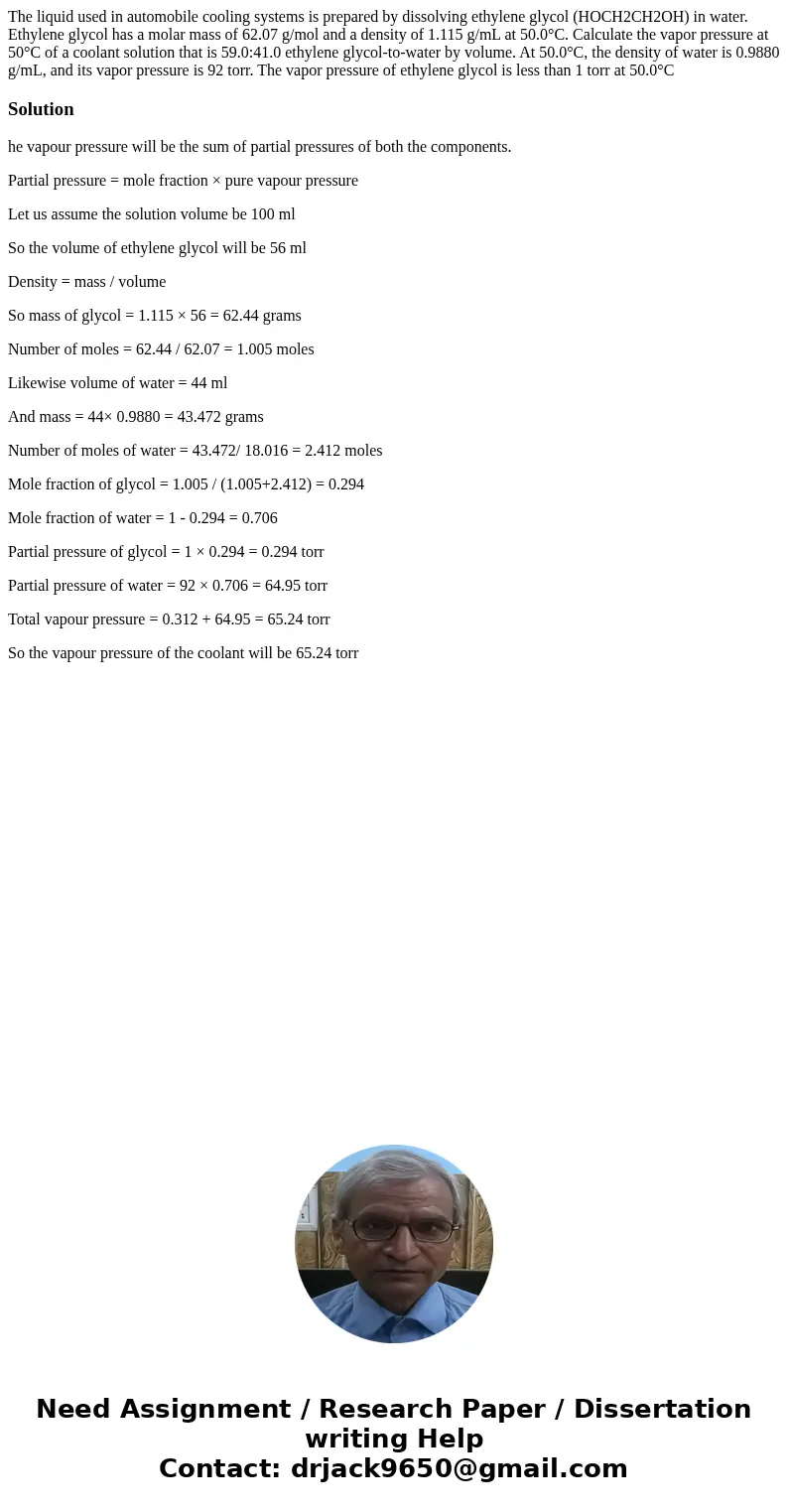The liquid used in automobile cooling systems is prepared by
The liquid used in automobile cooling systems is prepared by dissolving ethylene glycol (HOCH2CH2OH) in water. Ethylene glycol has a molar mass of 62.07 g/mol and a density of 1.115 g/mL at 50.0°C. Calculate the vapor pressure at 50°C of a coolant solution that is 59.0:41.0 ethylene glycol-to-water by volume. At 50.0°C, the density of water is 0.9880 g/mL, and its vapor pressure is 92 torr. The vapor pressure of ethylene glycol is less than 1 torr at 50.0°C
Solution
he vapour pressure will be the sum of partial pressures of both the components.
Partial pressure = mole fraction × pure vapour pressure
Let us assume the solution volume be 100 ml
So the volume of ethylene glycol will be 56 ml
Density = mass / volume
So mass of glycol = 1.115 × 56 = 62.44 grams
Number of moles = 62.44 / 62.07 = 1.005 moles
Likewise volume of water = 44 ml
And mass = 44× 0.9880 = 43.472 grams
Number of moles of water = 43.472/ 18.016 = 2.412 moles
Mole fraction of glycol = 1.005 / (1.005+2.412) = 0.294
Mole fraction of water = 1 - 0.294 = 0.706
Partial pressure of glycol = 1 × 0.294 = 0.294 torr
Partial pressure of water = 92 × 0.706 = 64.95 torr
Total vapour pressure = 0.312 + 64.95 = 65.24 torr
So the vapour pressure of the coolant will be 65.24 torr

 Homework Sourse
Homework Sourse